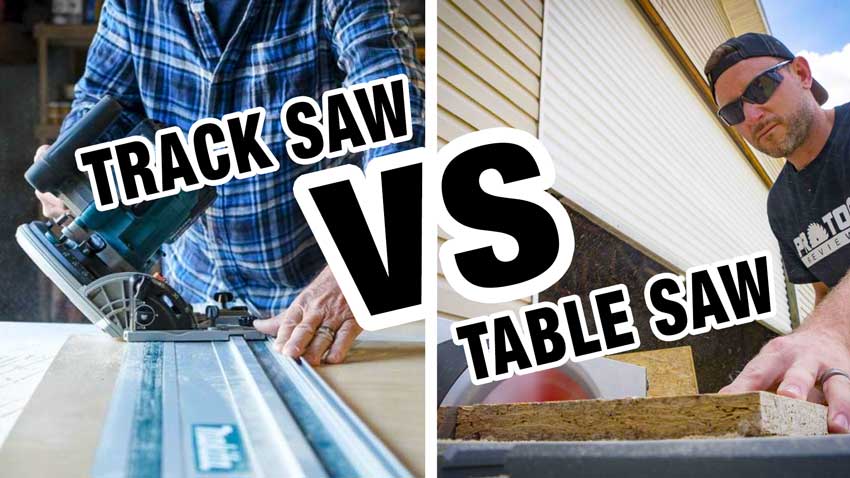Contractor and Woodworker Settle the Track Saw vs Table Saw Debate Once and for All!
Is the choice between a table saw and a track saw keeping you up at night? You’re not alone. If you’re ready to rest easy, here’s our guide to one of the tougher decisions in the world of woodworking and construction. In the track saw vs table saw debate, the application matters!
Editor’s Note: Check out our best portable jobsite table saws article for even more great recommendations. If you’re just starting out, don’t miss our how to use a table saw guide.
Track Saw vs Table Saw for Sheet Goods
Have you ever wrestled a 4×8 piece of 3/4-inch plywood through a contractor’s table saw?
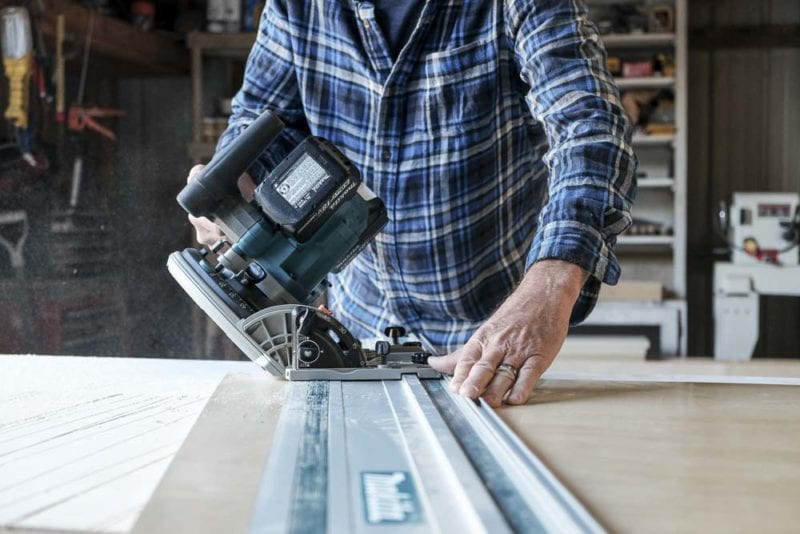
It’s not a ton of fun, especially when you’re working solo. For many makers, DIYers, and Pros, a track saw is an awfully attractive option. It’s gaining popularity for its ability to break down sheet goods efficiently and safely. But are there any other tradeoffs you might not have thought of? Should you use that table saw instead?
Verdict: Use a Track Saw
Track Saw vs Table Saw for Repeatable Rip Cuts
If you plan to make repeatable rip cuts, a table saw speeds up the process. Unlike a track saw that requires a reset for each cut, your table saw fence stays in position. This lets you continue ripping material to the exact same width immediately. It can turn a very difficult job with a circular saw into something quick, accurate, and easy.
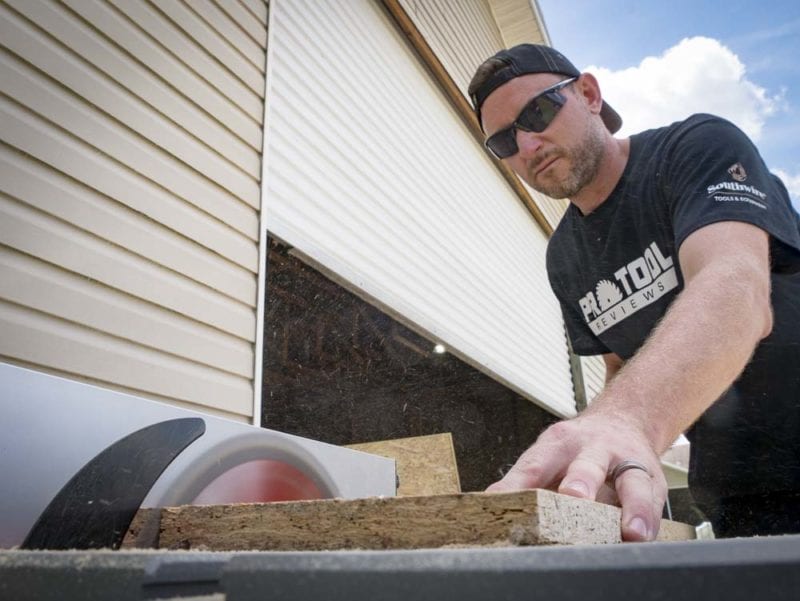
The presumption here, of course, involves ripping that doesn’t necessarily start with a full sheet of material. However, if you needed to rip multiple identical widths of material starting with a full sheet, this method still saves time due to not having to reset the saw.
Verdict: Table Saw
Table Saw vs Track Saw for Making Long Mitered or Angled Cuts
Any time you need to make a long angled cut across a large piece of material, the track saw should help. This could help when cutting panels for a built-in or a custom desk or shelf. In either case, trying to line up a long angle on a table saw blade is the wrong way to go for this type of cut.
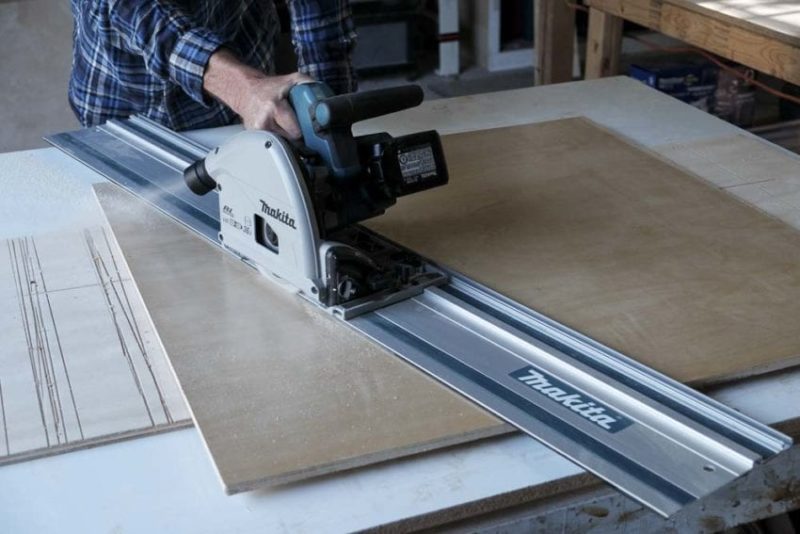
The ease of placement and adjustment of the track saw guide makes setting and cutting a line at an angle across a piece of plywood or MDF a piece of cake. Use the track saw in this way and you’ll save tons of time—and likely save on material in the process.
Verdict: Track Saw
Using a Table Saw vs Track Saw in the Shop
Unfortunately, the application has a lot of influence on this decision. We much prefer large 15-inch sliding table saws in furniture production shops. A track saw works wonders, but nothing beats a sliding table! When you work in a shop, you don’t have to worry about transporting the table saw. That means you can also opt for larger infeed and outfeed areas and a more powerful motor. That helps when dealing with larger and/or heavier material. Better still, you can often look at larger and more stable cabinet saws instead of smaller contractor table saws.
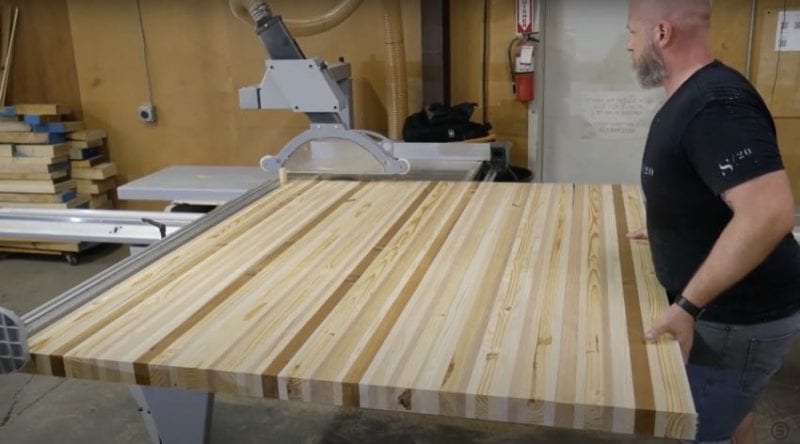
With that said, smaller shops that focus more on DIY projects may find that a track saw saves valuable space. It also allows a majority of cuts you may only have previously considered using a table saw for.
In that case, the track saw could prove valuable. Anyone who does production-level work, however, will quickly agree that it’s very difficult to completely eliminate the table saw from the shop.
Verdict: It Depends on the Shop
When Space is Limited
Yes, available space represents a valid concern when choosing between a track saw and table saw. Even if you have ample storage space, table saws take up a significant amount of room. This holds true even with models that fold up for storage. Ultimately, the usefulness of a tool has to justify its size.
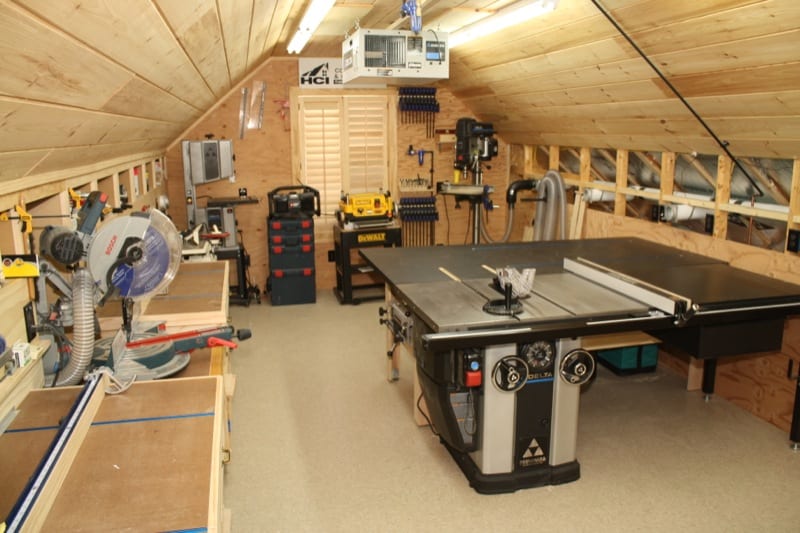
If you only occasionally make cuts on sheet goods, a track saw can save tons of space in the shop. You can take that central area where a table saw would normally occupy and use it for a central bench that can serve a myriad of purposes.
In terms of sheer portability, a track saw breaks down into a circular saw and a track. And, most long tracks can break down into two or more pieces for easier moving. Similarly, track saw components take up relatively much less storage space than a table saw.
Verdict: It Track Saw
Editor’s Note: One area where a table saw makes some serious headway concerns special situations. A table saw can make deeper cuts, narrower cuts, dadoes, and rabbets. With a standard setup or a commonly available dado stack, the table saw excels at several of these specialized types of cuts. A track saw really cannot make these cuts—at least not practically.
Final Thoughts
A Track Saw Excels at…
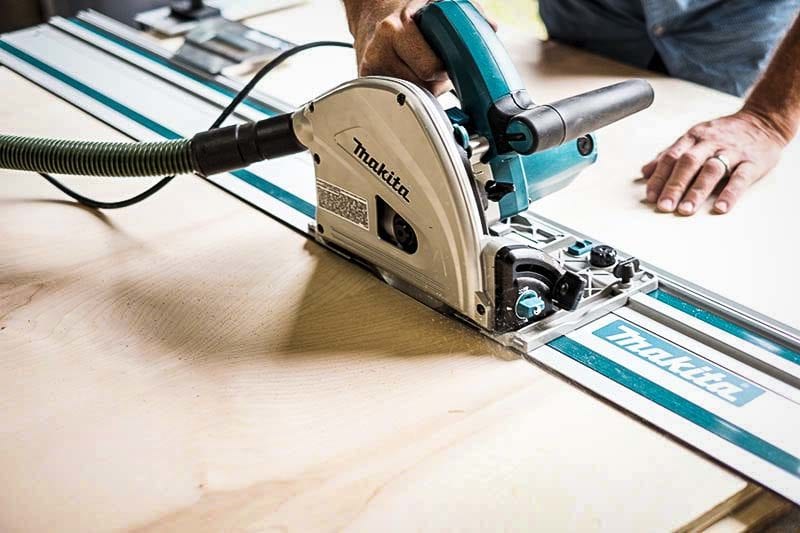
- …long rip and crosscuts of in heavy and/or large sheet goods. Using sawhorses and a sacrificial foam board available at any home improvement store, you can make easily controlled rip and crosscuts. The track saw’s rail (which you can extend) is the only constraint on how long you can cut.
- …solo work. It’s much easier for one person working alone to accurately and safely cut heavy and/or large pieces with a track saw.
- …any cut that’s not 90°. You can easily line up the rail along any straight path across the material. This makes (intentionally) un-square cuts easier and more precise than using a table saw.
- …smooth, clean cuts. The track saw’s plunging action and blade result in a cleaner cut than all but the finest, smallest-kerfed table saw blades.
- …dust collection. A track saw’s point of collection is closer to the dust creation – and a bit more contained – than a table saw.
- …keeping your fingers attached to your hand. I’m only half-joking, really. The track saw’s covered blade and cutting action has a much better track record when it comes to injuries.
Wrapping Up the Track Saws vs Table Saws Debate
In many cases, one saw may substitute for the other. But as you can see, there are times when one is superior depending on space, manpower, material, and type of cut.
A quality track saw can cost as much as a jobsite table saw (or more). As such, the price isn’t necessarily the highest priority between the two. Take a look at the work you do and see which one makes the most sense. As a DIYer, you can probably get away with one or the other.
Pros that are used to making all their cuts on a table saw can add a track saw to the mix to boost your productivity. It pays for itself fairly quickly and it doesn’t take long to figure out where each saw does its best work for you.
We hope you’ve enjoyed these thoughts. If you’re a Pro and have your own track saw vs table saw thoughts be sure to leave them in the comments below!

